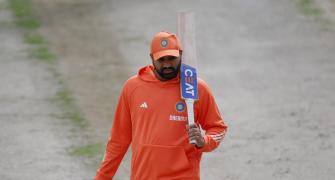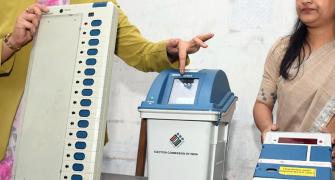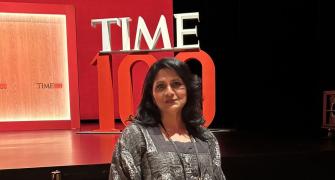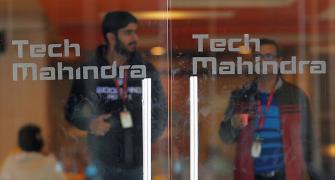'Better late than never' just about describes the FM radio revolution that has gripped the cultural capital of the country this summer, what with four new stations vying for airspace and the good old All India Radio FM giving itself a young and trendy facelift.
India Today Group's Radio Red, Times Group's Radio Mirchi, and Airtime Marketing and Sales India Pvt Ltd's (AMSI) Aamar and Power, all launched simultaneously on Friday midnight have triggered off a virtual war to woo listeners with the best in broadcasting that India has witnessed.
For the good old middle-class Bengali and a new generation of upwardly mobile youngsters, both of whom still prefer to tune in to the radio, the FM revolution brings in new hope with experts estimating at least a two-fold increase in listeners by the end of the year.
The radio extravaganza has already spoilt listeners for choice with programmes ranging from the hip and bubbly to more serious down-to-earth.
While Red and Mirchi have tasted success elsewhere with their FM operations, Aamar designed by Hitz FM Radio India Pvt Ltd, and Power conceived by FM Radio Pvt Ltd, Kolkata would be the take-off point.
Aimed mostly at the young and happening urban audience in the city and its suburbs, the four stations would play on the 93.5, 98.5, 106.2 and 107.8 mega hertz frequencies.
While Mirchi's USP is 100 per cent live programming, Aamar would be India's first regional language FM radio. It on-air presentation would be 100 per cent Bengali with programmes designed to appeal to the sophisticated, contemporary, urban Bengali listeners between 24 to 44 years of age, Director Sanjay Ahmed says.
Mirchi, on the other hand, would focus on high quality, interactive programmes.
Radio Red, the hot and spicy mix of regional and national programmes, has already roped in a few popular local Radio Jockeys with successful stints in AIR's two FM channels, rechristened in April as Radio Rainbow and Radio Gold.
And all players are
Times Group MD Vineet Jain is dripping with optimism on commercial radio becoming India's second success story after telecom.
So is AMSI Director George Chapman, whose ambitious target includes roping in an audience of 900,000 in and around Kolkata within the next three months.
Jain, however, points out that the government has to substantially slash licensing fees to make FM a viable business proposition.
AMSI too is looking at an all India presence within the next few months, when the Centre will announce the next round of licensing for 70 more cities.
Chapman, one of Australia's most experienced electronic media executives and responsible for the launch of his country's first FM station, says India is yet to capitalise on the full potential of advertisement revenue that could be earned from its air waves.
"While in many countries, private commercial FM radio is well established, in India it is an emerging medium. As opposed to Philippines' 14 per cent and Sri Lanka's 25 per cent, the Indian share of advertising expenditure on radio in only about two per cent," he points out.
Market estimates say that the ad expenditure in India had almost doubled between 1997 and 2002 to Rs 12,500 crore (Rs 125 billion), registering a compounded annual growth rate of 16 per cent.
"If even 15 per cent growth is estimated this year, the total advertising revenue in 2003 would be to the order of Rs 14,500 crore (Rs 145 billion). Herein lies the opportunity for radio," he emphasises.
But what would be the USP of these new operators?
"Radio in India currently operates on a block format, which means listeners don't know what is coming up next. The new-age radio format would aim to make listeners identify with and become loyal to a particular station that suits their interests," Power Director Partho Mazumdar says.
And for advertisers, buying air time on these radio stations with niche target audiences minimises advertising wastage. Being one-to-one, personalised and non-intrusive, it delivers messages to more attentive listeners.







